The Full Story
The Making of Mos'anne
In collaboration with Dutch artists Kennis & Kennis who specialize in the artistic reconstruction of extinct species and especially hominids, scientists from the Ghent University have reconstructed the face of a Mesolithic woman found in the burial cave of Margaux in the Meuse valley, using a combination of anatomical, genetic, and archaeological evidence. This project integrates cutting-edge research with artistic expertise to create a compelling vision of life in post-Ice Age Europe.

Selecting the skull
We selected a particularly well-preserved skull for facial reconstruction. The chosen specimen, known as GM CR1, belongs to Mos'anne—a woman whose remains were discovered at the fascinating site of Grotte Margaux. Her skull includes both the cranium and jaw, making it ideal for reconstruction. In collaboration with Dr. Michel Toussaint, who leads the study of the Grotte Margaux skeletons, and the renowned Kennis brothers, we agreed that Mos'anne would be the subject of this project.
Detailed analysis of her skull reveals a small, rounded cranium, a flat nose, and features typically associated with female anatomy. Interestingly, she also displays relatively pronounced brow ridges. Based on the closure of cranial sutures and advanced tooth wear, we estimate her age at death to be approximately 45 years, with a margin of ±10 years.
Estimating age in adult skeletons is challenging, as it relies on signs of wear and tear rather than the more predictable growth patterns seen in children. Nevertheless, this age range provides valuable guidance for the artists, helping them determine how many wrinkles, age spots, and other age-related features to include in Mos'anne’s reconstructed face.
The underlying anatomy
For the facial reconstruction of Mos'anne, the artists relied on published scientific data to guide the placement of facial muscles, fat layers, and skin. To ensure anatomical accuracy, they limited their reference materials to individuals of similar sex, age, and ethnic background. This approach helps create a face that is not only structurally plausible but also reflective of the individual’s likely appearance in life. When available, the reconstruction process is further enhanced by genetic data extracted from the skeleton, which can provide insights into traits such as skin tone, eye color, and hair color—adding another layer of realism to the final result.
In Mos'anne’s case, the artists used average muscle thickness data for Caucasian women and fat distribution patterns typical of middle-aged females. These details are crucial in shaping the contours of the face, such as the fullness of the cheeks, the depth of the eye sockets, and the definition of the jawline. By combining anatomical science with artistic interpretation, the reconstruction offers a compelling and respectful glimpse into what Mos'anne may have looked like thousands of years ago.


Eye, hair and skin colour
DNA was extracted from the petrous part of the skull. This is done by drilling a small hole behind the ear and extracting DNA from the powder. First of all, the DNA showed us that Mos'anne belongs to the "Western Hunter-Gatherers", a group to which the famous Cheddar Man also belongs. All the individuals that belong to that group that have until now been studied in Western Europe have dark hair, dark skin and blue eyes. However, the genetic profile of Mos'anne points to greater complexity of skin pigmentation within these populations.
Mos'anne turns out to have blue eyes, most likely dark hair, but an intermediate skin tone. With this scientific information the Kennis brothers could set to work and start adding their creativity to the face of Mos'anne.
Find out more about ancient DNA analysis here.
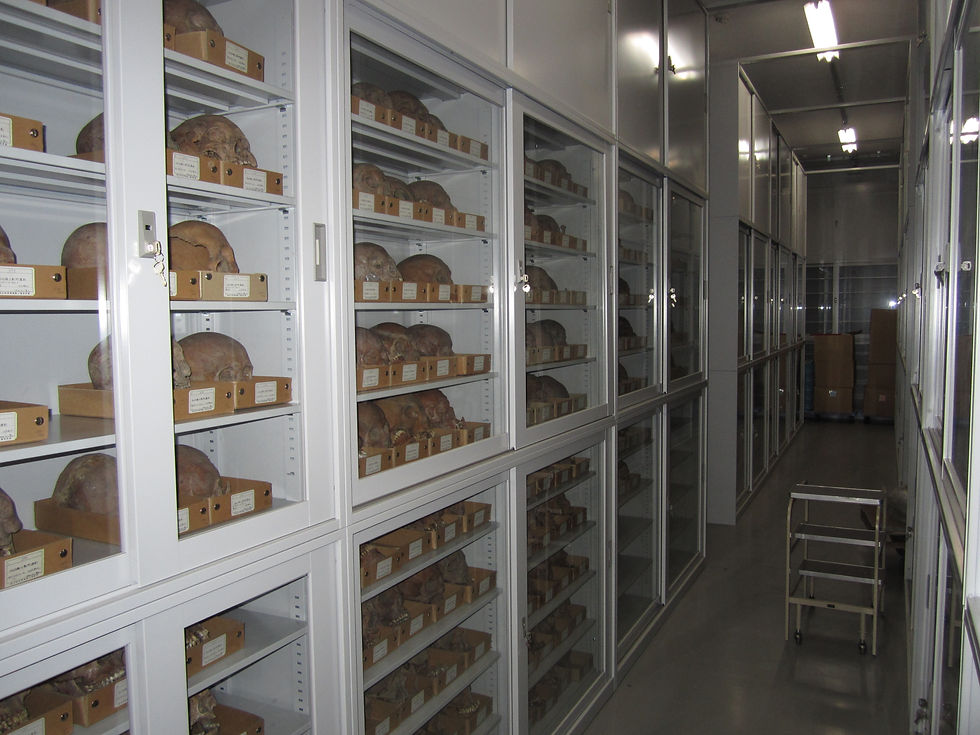
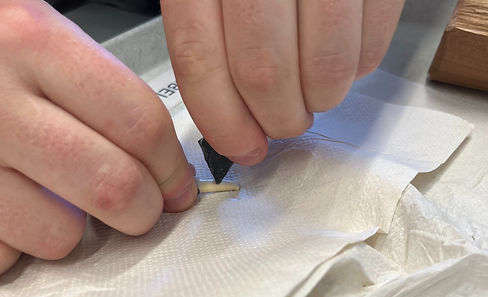
Finishing touches
Once the biological profile of Mos'anne was established, the Kennis brothers were able to bring her to life through their unique artistic interpretation. While their reconstructions always carry a personal and creative touch, this project was deeply informed by scientific findings. We provided them with additional archaeological and anthropological insights to guide the details of her appearance, ensuring that the final result was not only expressive but also grounded in evidence.
Mesolithic people often adorned themselves with items made from natural materials. To reflect this, we recreated a necklace for Mos'anne using a deer tooth pierced with a stone tool, strung on a cord made from plant fibers. Red ochre and charcoal—commonly found in Mesolithic burials and used to decorate tools—were incorporated into her appearance as well. The ochre was used to dye a leather band that ties her hair, while charcoal was applied to her skin in geometric patterns, inspired by the absence of figurative art in the Mesolithic Meuse basin. Additionally, microscopic residues on stone tools from the site revealed traces of duck feathers, which were also included in the reconstruction.
This thoughtful blend of science and artistry offers a vivid, respectful portrayal of how Mos'anne may have presented herself in life.
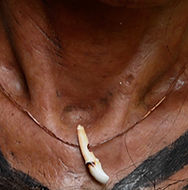
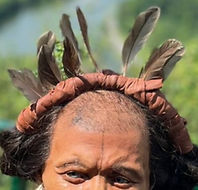
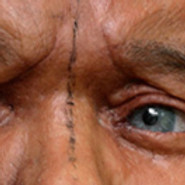
COPYRIGHT
All images on this webpage are under copyright of University of Ghent and Kennis & Kennis. Please contact us before reuse.